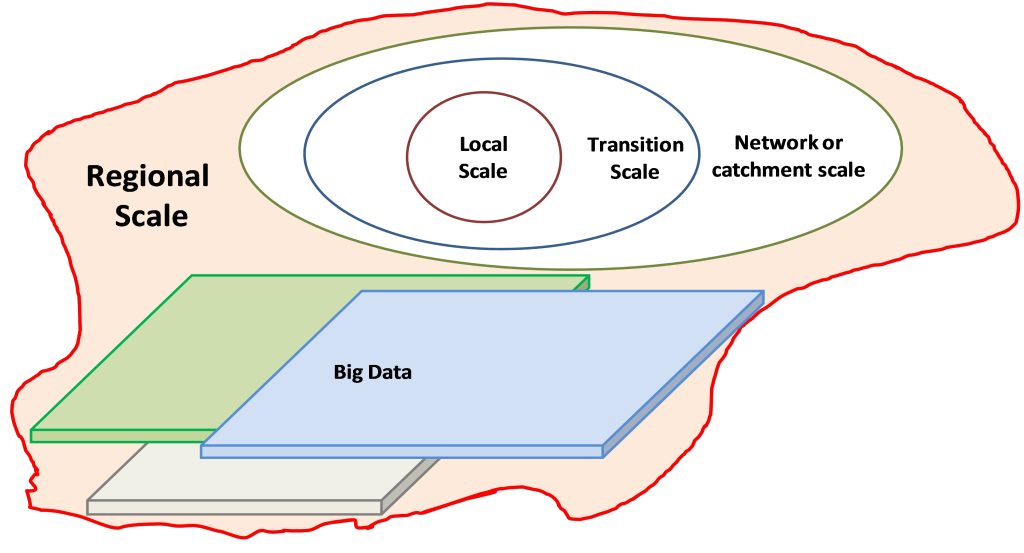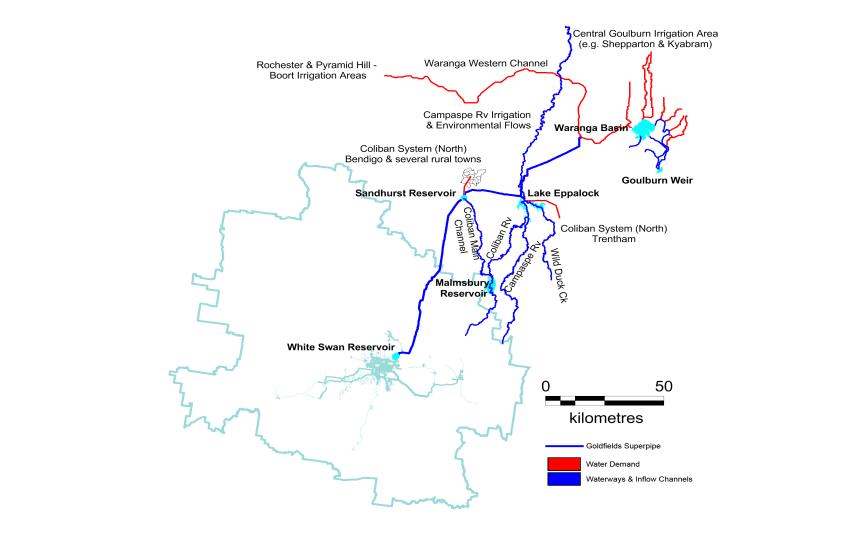The Systems Framework includes links and feedback loops with surrounding regions from a multi-disciplinary perspective, and provides understanding of regional scale outcomes (see Figure 1) or footprint effects.
Figure 1: Schematic of the Systems Framework with a focus on the Regional Scale
Figure 1 shows that the regional scale includes interactions with the local and transition scales and is underpinned by spatial big data. The regional scale includes water supply from external or remote catchments that considers impact on other communities, and the discharge of wastewater and stormwater into regional waterways. This includes impacts of changed streamflows and water quality on surrounding regions, and contributions to regional water security (For example see Figure 2).
Figure 2: Example of the interdependency of the Ballarat region with the Campaspe and Goulburn River basins
Figure 2 highlights the interactions between regions and river basins for the Greater Ballarat region (for example). These linked regional processes also include energy, climate and economic influences – such as impacts of the status of a national economy on local behaviour and creation of employment.


